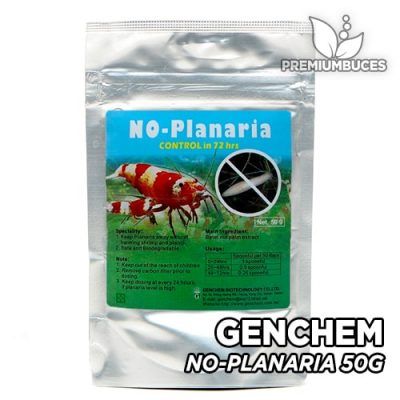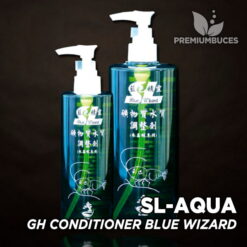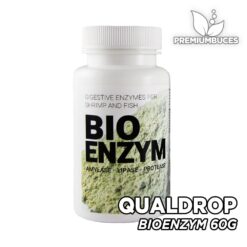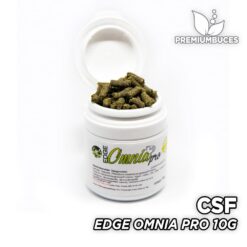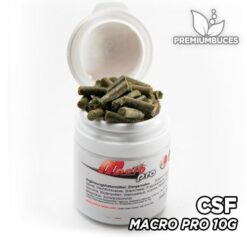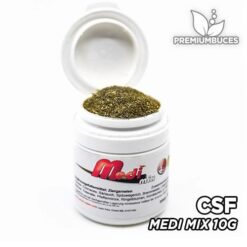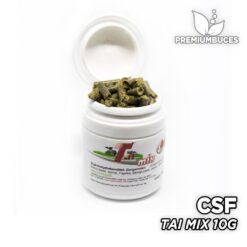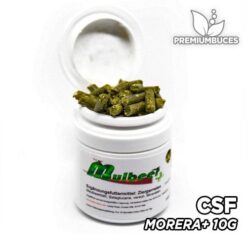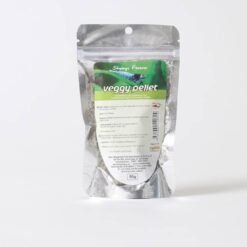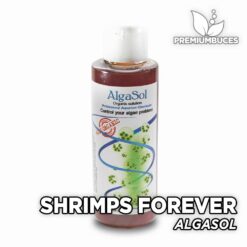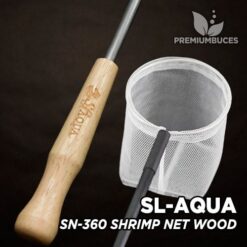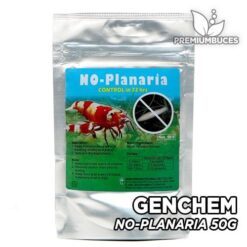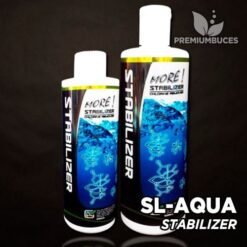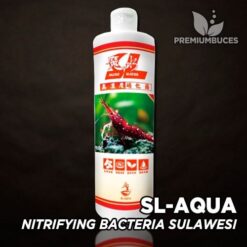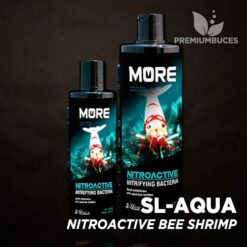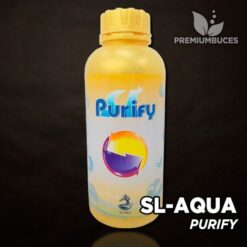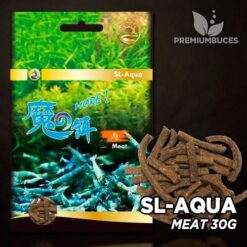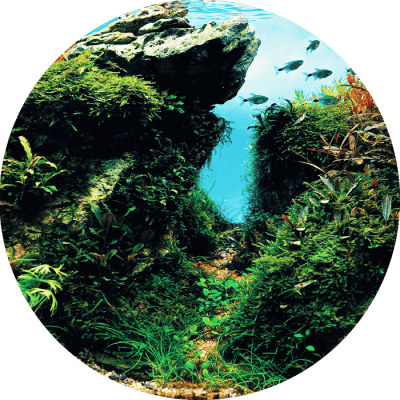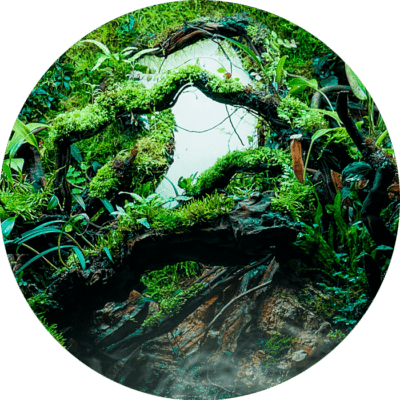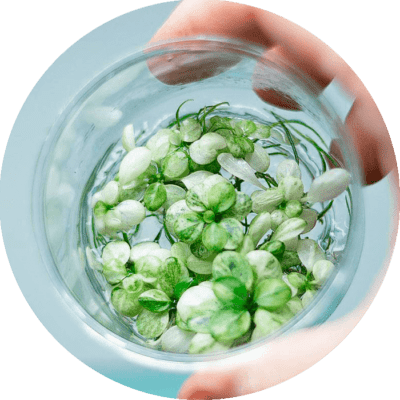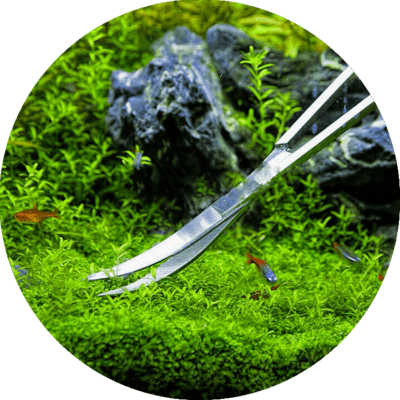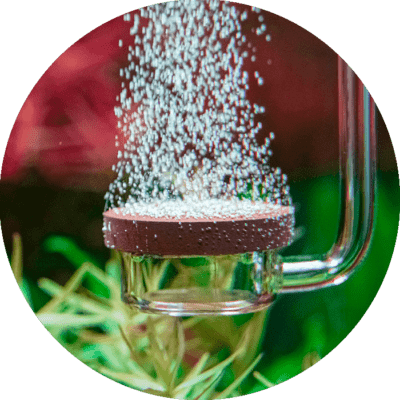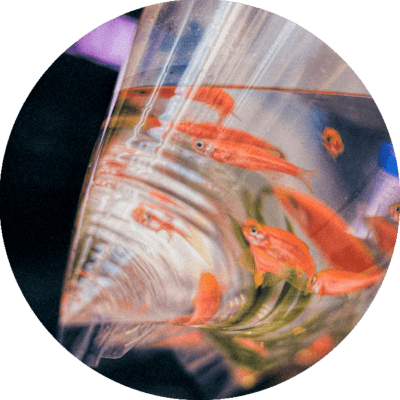By exchanging or buying new fish, shrimp and aquatic plants it is possible to introduce pests into the aquarium. There are several pests, some of which are annoying, while others can be quite dangerous for aquarium inhabitants. We will talk about Hydras and Planarians, as well as how to combat them.
PLANARIES
All the planarians They are in the category of flatworms or turbellaria. This group of animals consists of different species with different characteristics. Turbellaria is present in both fresh and salt water. As a general rule, they live like predators and therefore, are considered pests in the aquarium. Although, not all turbellarian species are dangerous for aquarium inhabitants, such as fish, shrimp and snails, since only they feed on microorganisms. In the following points we will give you some tips on how detect and combat the Planarias in your shrimp or aquarium.
ARE PLANARS DANGEROUS?
En large quantities, planarian worms may pose a danger to invertebrates, like crabs, prawns and snails, but also for fish. Here, the size of the dam is crucial, regarding this, juvenile animals and eggs are particularly affected. But also attack old and sick specimens or newborn shrimp. A planaria infestation It certainly does not lead to a massive or immediate extinction of the entire stock. Fewer and fewer young people are more likely to have the opportunity to mature, and therefore the population will age and decline over time.
IDENTIFY THE PLANARIES IN THE GAMBARIO
How to Live Aligned with classic pest in an aquarium, the planaria worms belongs to the order Tricladida. Recognizable by its flattened and smooth body. The most important characteristic for identification is the two eye spots at the end of the head, with them, this worm can perceive brightness. In fact, planarians are quite sensitive to light. Thus, they are more likely to seek protection in darker areas of the aquarium, such as near the substrate or in the filter.
In the middle of the body, the so-called throat point can be found, which is generally lighter in color than the rest of the body. Here is her extensible throat,. by which the planaria worm feeds. The stain is usually fairly easy to identify. Even with whitish body color planarians, it appears slightly more marked than the rest of the worm. Other typical body colors are brown, reddish and there are also stained shapes. If the worm has eaten something colorful (for example, the remains of a red Planorbis Snail, the large and dendritic intestine of the planaria temporarily changes to this color. Starting from the esophagus, this Y-shaped intestine extends with a point toward the head and two points towards the tail The intestine is more visible against the light.
Adult planarians can reach a body length of about 2 cm. Unfortunately, detection of planarians is extremely difficult, especially in its early stages, since due to their tiny size they can be confused with the bottom of the aquarium.
A good sign that you are not dealing with planarians is when the worm is eaten by fish. The planarias they are wrapped in unpleasant-tasting slime and are very unappealing I eat food, there are only a few species of fish that eat planarians. Other worms that look quite similar (probably nematodes) are good food for fish.
A triangular head is often mentioned as another feature of planarians, but some species do not have this feature and there are planarians with other head shapes as well. Therefore, the shape of the head should be excluded from the list of mandatory characteristics. Something we can take for granted: If the worm has a triangular head and in the shape of an arrowhead, definitely it's a planaria classic.
Another aid to detection is the touch test. If you touch one planaria Slightly with your finger, it contracts at one point and stays in place, like aquarium glass. Other worms tend not to show this behavior, remain stretched for a long time, or fall off the glass when touched. You must do this with a lot careful and don't crush the planaria, since new individuals can develop from their remains.
The movement of a planaria and other flatworms is sliding, so, in principle, it is similar to that of snails. A caterpillar-shaped back and forth movement is most characteristic of a leech, a harmless oligocheata, or a common worm. Another distinctive feature: unlike leeches and oligocheata, planarians cannot swim. If you (carefully) peel them off the glass, they sink to the ground.
WHY DO PLANARS APPEAR IN THE AQUARIUM?
Like others pests, the planaria can reach the aquarium through recently purchased material, such as aquatic plants or live food. But it is also necessary to be careful with snails, crabs and prawns, because parasites can adhere to them. An appearance of these animals can also occur using a filter or substrate of an already infected aquarium.
PREVENTION MEASURES AND METHODS OF CONTROL AGAINST PLANARIAS
When buying new animals, especially shrimp from your local pet store, you should carefully inspect the aquariums where they are kept. If there are planarians in them, you should consider their purchase.
All the general precautions, such as rinsing freshly purchased plants well, as well as disinfecting or avoiding cross contamination in shared tools between aquariums such as geckos when several aquariums are maintained and some have a pest, are also useful methods to prevent infection by these worms. When introducing newly acquired animals, the least amount of transport water should be dropped into the aquarium.
Una high appearance of planarians is closely linked to a superchargingTo keep the population under control, reduce the amount of food you bring to the aquarium.
Of course, you can try to collect these voracious and harmful worms manually. But this method is not particularly effective, since the majority of the population live hidden, especially on the substrate. It is easier to use a planaria trap.
Certain types of fish or shrimp can be put into the aquarium like natural predators of the planaria. The use of such animals only as a means to an end should be considered well, as the conditions of the aquarium for their maintenance must be appropriate for the respective species. A socialization with, for example, ornamental shrimp is not possible with some species, since these are considered prey.
Here, too, predators only help keep the population of planarians at bay. The worms will not be completely eradicated, since there are always enough hidden in the substrate and can continue to reproduce.
Much more promising is the treatment with an antiparasitic agent like Flubenol or Panacur. When used correctly, it is possible to return to having an aquarium completely free of planarians. Unfortunately, both Flubenol and Panacur have a negative impact on the aquarium ecosystem. Flubenol kills all types of snails and the active ingredient is stored in the substrate for several months. Snails can only be reintroduced into the aquarium after a long time.
In this case, the best method against planarians is a product intended for this, such as SL-AQUA Z-1 Bio ProtectorIn the description of the item you can see in detail its characteristics and how to use it. You can also use Genchem NON-Planaria.
HYDRAS
Occasionally, Hydras appear our shrimp or aquariums. These creatures resemble a skinless umbrella or perhaps a small coral. Actually, a comparison with corals is not so far-fetched at all, because this freshwater polyp belongs to the same genus as corals, the cnidaria call. A lot of misinformation and scaremongering circulates around the internet regarding these really fascinating little creatures. We will do our best to give you more information about it.
HOW HAVE THE HYDRAS GOT TO THE AQUARIUM?
Firstly, hydra can be introduced by aquatic plants, decoration or (rarely) together with fish or invertebrates, anchored in snail shells, but also by themselves with house dust. As a survival method, the hydra has adapted to the formation of eggs at rest, which they produce through sexual reproduction. If conditions in the habitat worsen, the hydra forms genitalia and reproduction by copulation begins. The eggs at rest, as a consequence of this, become part of the house dust after the aquarium has dried. If the aquarium is not hermetically sealed, that really none is, the hydra may come up even without an existing fish or shrimp population, even though the aquarist has used clean plants and uses brand new woods and rocks for the hardscape. And yes, a serious case of hydra can easily appear with live food and especially food from the natural environment, that is, live food captured by oneself from ponds in nature.
HOW DO HYDRAS BEHAVIOR?
The most common types in aquariums are the native hydras of our region: Chlorohydra (Hydra) viridissima, the green hydra that acquires its color from the symbiotic algae of the genus Chlorella and Hydra vulgaris, which has a yellowish-brown to whitish color. The hydra grows to sizes between 0,3 and 1 cm and its tentacles can be up to 2 cm long. The green hydra generally stays a little smaller.
Hydra is not a super mobile creature. They sit and wait for prey. Usually they can appear anchored to almost any surface of the aquarium. If the environmental conditions are not good enough for them, they can release their anchor pad that they use as a “foot”, forming a small gas bubble under their foot and use it as a float to rise to the surface and release themselves into the spine of water for find a better place where to continue reproducing and growing.
ARE HYDRAS DANGEROUS IN AN AQUARIUM OR GAMBARIO?
The answer to that is a clear yes and no. Hydras are hunters, they have cnidoblasts at the end of their tentacles to paralyze their prey (smaller crustaceans, worms, larvae, and the like), before eating them. Hydras are capable of catching and eating prey of similar size, such as newborn shrimp or small fish fry. Hydras are ambush predators and do not actively hunt, but sit, waiting for prey to come to them. With the help of their olfactory cells, they perceive animal cells and protein-rich foods, this causes the tentacles to move towards the opening of the mouth.
Most the hydras consist of too small to actually threaten the other inhabitants of the aquarium, but it is reasonable to believe that at least it is unpleasant that the prawns cannot sit without being disturbed by the hydra mat. If a large Hydras infection and appearanceThere is certainly a need to take action, but you don't need to panic if there are only one or two hydras in your aquarium. If this is the case, there is usually nothing to do and a small appearance disappears on its own after a while.
PREVENTION MEASURES AND METHODS OF CONTROL AGAINST HYDRAS
Can Minimize risk, especially if you maintain several aquariums and some are already infected, following certain hygiene rules to avoid cross contamination from one aquarium to another. It is recommended to have dedicated tools for each individual aquarium (salabres, tweezers, pruning shears, etc). If this is not the case, the tools should at least be disinfected before being used between one aquarium and another. This also serves to prevent the transmission of parasites, diseases and algae.
A strong infestation always it is a consequence of the presence of a lot of food, there is no difference here between hydras, snails or planarians. Therefore, you must root out the cause of the problem and not only combat the symptoms (hydra). If there are many small organisms like Cyclops, Ostracods or the like, it is troublesome that these critters are not only excellent hydra foods, but also a clear sign of overfeeding. These little bugs they are decomposers and take care of food scraps. If you feed in a tight, responsible and moderate way, the amount of microorganisms will decrease, and with them, after a short period of time, the amount of hydra. Fine and powdered food goes directly to the hydra, so care should be taken that fish and shrimp receive this food directly. A glass feeder can be of great help here.
Predators such as large snails are often recommended against hydra and can help reduce your population, although in this way you will not be able to get rid of them completely,
Another method is treating an aquarium with deworming agents, Flubenol or Panacur. Its active ingredients cause hydra to die, but they also have a toxic effect on snails and are stored in the substrate. As a consequence they are still active after months.
As we mentioned in the planaria section, a good product to eliminate Hydras is SL-AQUA Z-1 Bio ProtectorIn the item description you can see in detail its characteristics and how it is used.
As well it is easy to remove the hydra manually, but it must be done very carefully because hydras can fully regenerate from a few cells. Crushing or scrubbing them will increase their population. If there is hydra in the aquarium windows, it is possible to scrape them with a common algae glass cleaner and then vacuum them with the siphon.
Better and more practical than tearing them off isThe method of tarnishing them with hydrogen peroxide (hydrogen peroxide) or glutaraldehyde.
In this case, the liquid is deliberately discharged onto the hydra. They die or at least loosen and fall to the substrate, so you can immediately absorb them with the siphon before they recover.
GENERAL PRECAUTIONS ABOUT THESE PESTS TO BE TAKEN INTO ACCOUNT
If you want to be sure, buy potted products and from a trustworthy specialized store. A good way to avoid introducing parasites is to carefully observe the animals or plants before introducing them to the shrimp, looking at the leaf and the underside and rinsing them with mains water or aquarium water in a separate container. Also recommended do not pour the transport water into the aquarium when introducing new fish or shrimp.
Other articles of interest may be:
How to Eliminate Aquarium Algae - Causes and Most Effective Treatments
Caridines and Neocaridines - File and Care Aquarium Prawns
Rate this post:
In our online store you can buy Items for Gambario and receive them within 24 hours in Spain.
Buy Gambario Items


